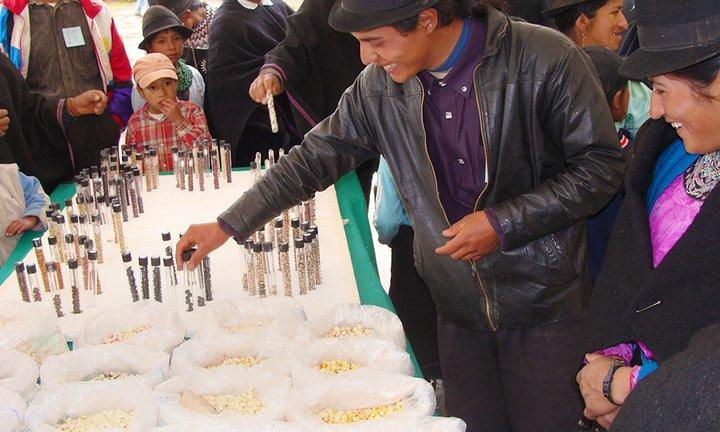The International Plant Treaty at the centre of climate change discussions

M. Ann Tutwiler, Director General, highlights the importance of the International Treaty to facilitate the exchange, benefit-sharing and dialogue around the conservation and sustainable use of crop diversity in a climate change scenario.
Yesterday representatives from international organizations and agriculture ministries around the world convened in New York to discuss the International Treaty on Plant Genetic Resources for Food and Agriculture, climate change and food security. The meeting was held on the occasion of the 69th Session of the UN General Assembly and the UN Climate Summit.
This is an issue of great importance to Bioversity International. The report issued this year by the International Panel on Climate Change paints a pessimistic picture: food production will decline by 2% per decade as demand simultaneously increases by 14% until 2050. Global 'hunger hotspots' will increase in size and severity.
To find crops and varieties that can grow in changing climates, the people who manage and conserve plant genetic resources all over the world need to work together to pool those resources and create a networked collection. No single country has all genetic resources it needs. The International Treaty was designed to facilitate this kind of cooperation between national governments, genebanks, researchers, plant breeders, development agencies and farmers. It is an international system for conserving, adding value, and sharing crop diversity, contributing to a whole that is greater than the sum of its parts.
Bioversity International works with the CGIAR Research Program on Climate Change, Agriculture and Food Security (CCAFS) piloting ways in which farmers, local seed providers, breeders and genebank managers can work together to implement and share the benefits of the Treaty. For example, our 'Seeds for Needs' initiative works with farmers and national genebanks to identify crop varieties that are best suited to current and future climate conditions in 11 countries. Our 'Genetic Resources Policy Initiative' works with Treaty member states to include their plant genetic resources in the Treaty’s global pool – so that researchers, farmers and breeders in those countries can access that global pool of diversity and benefit from capacity strengthening support available under the Treaty. These initiatives promote mechanisms for the sharing of genetic material, and benefit from the support, momentum and exchanges at national level made possible by the Treaty.
Collectively, CGIAR has placed approximately 750,000 accessions of crops and forages essential for global food security under the Treaty’s framework. The Treaty’s Benefit-sharing Fund has provided much-needed, targeted capacity strengthening for farmers, national research organizations and breeders in developing countries to participate in technology transfer – and we encourage the international community, private sector and research organizations to support the fund. Indeed, the Treaty has become an extremely important part of the day-to-day lives of the centres in the CGIAR Consortium, and of our partners.
We at Bioversity International consider it an indispensable international instrument to facilitate the exchange, benefit-sharing and dialogue around the conservation and sustainable use of plant genetic resources, particularly as we look at ways to adapt to climate change. The Treaty recently celebrated the 10th anniversary of its entry into force and I would like to reaffirm Bioversity International’s support to the Treaty as it enters its second decade.
M. Ann Tutwiler
Email: a.tutwiler@cgiar.org
Learn more about Bioversity International's involvement in supporting policies for crop and tree diversity management.
Photo: Farmers learn about different bean and maize varieties at a seed fair in Saraguro, Ecuador. Credit: Bioversity international/J.Coronel
